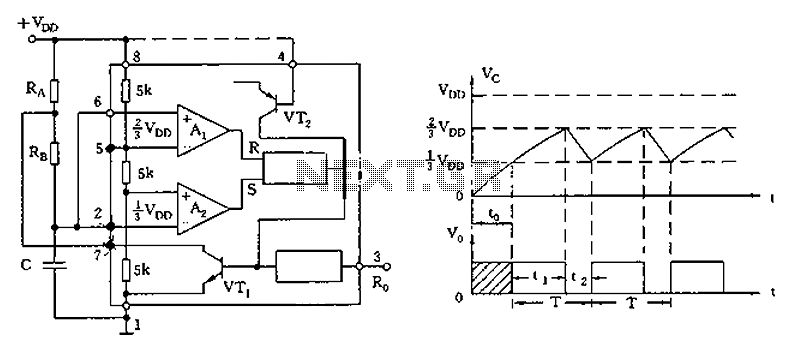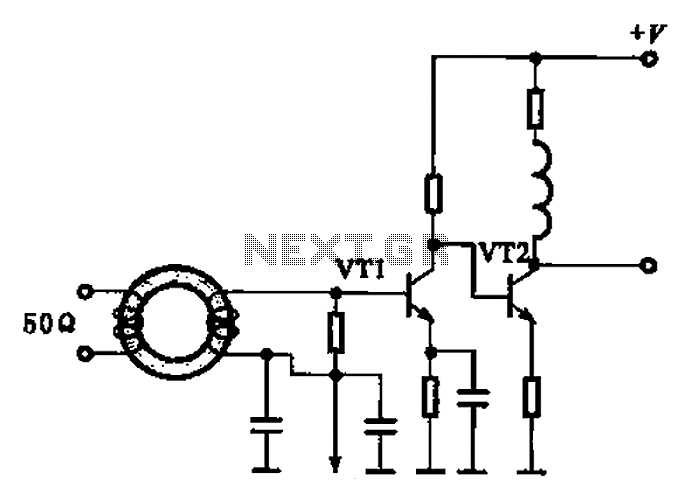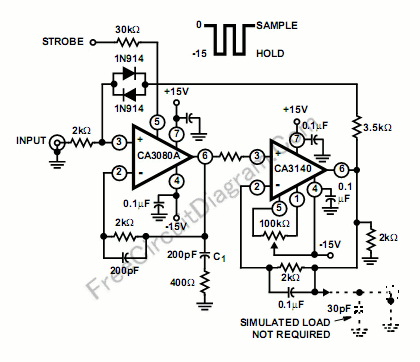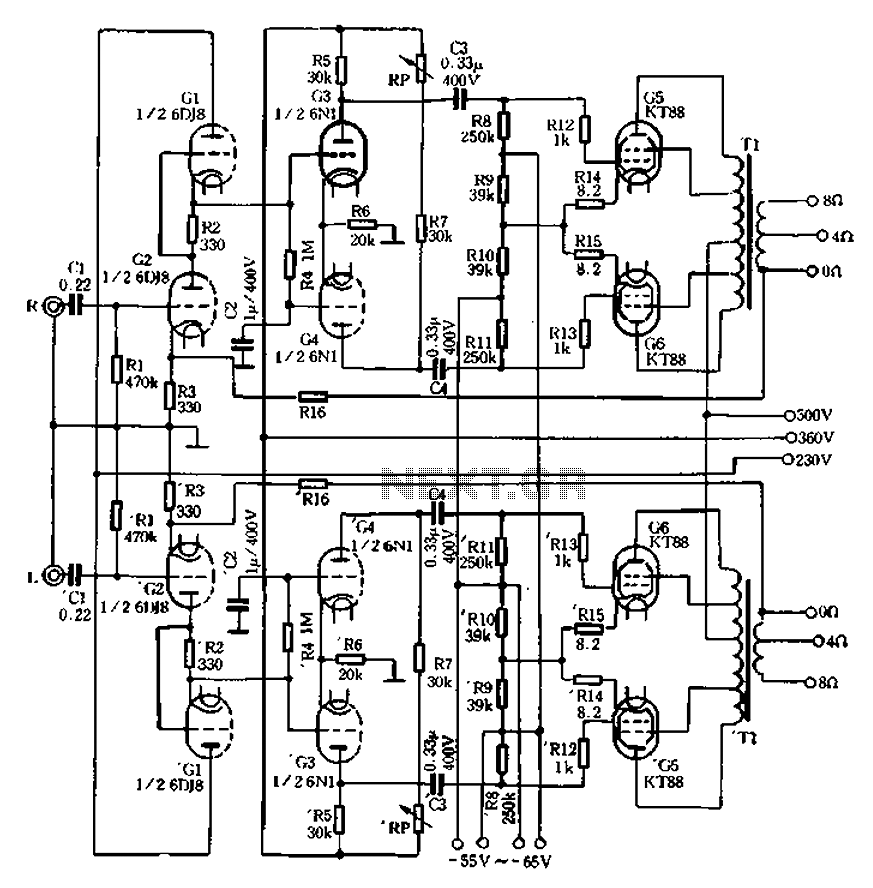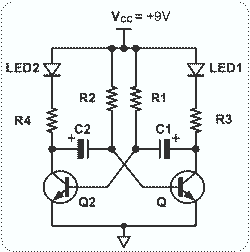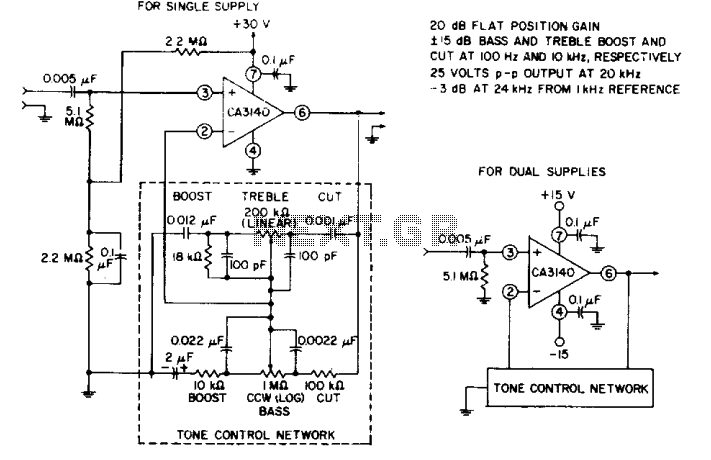
op amp monostable multivibrator

This is a monostable multivibrator circuit that utilizes a single operational amplifier. The primary component of this circuit is the 741, a general-purpose operational amplifier. A monostable multivibrator is a timing circuit that changes its output state when triggered and returns to its original state after a specified time delay. It is referred to as a "one-shot" because only one of its output states is stable. A negative trigger pulse at the input causes the output of the operational amplifier to go to a logic high state. This action charges capacitor C2, which temporarily raises the non-inverting input of the operational amplifier above the inverting input, keeping the output high for a predetermined duration. Eventually, C2 discharges to ground, and the output of the operational amplifier returns to a logic low state. The pulse duration is determined by the values of resistor R2 and capacitor C2. The "one-shot" has multiple applications, including frequency division of the input signal and conversion of irregular input pulses into uniform output pulses.
The monostable multivibrator circuit described operates by leveraging the properties of the operational amplifier (op-amp) to generate a precise time delay in response to an input trigger. The 741 op-amp, a widely used component in analog circuits, is configured in a manner that allows it to function as a monostable multivibrator. Upon receiving a negative trigger pulse at its input, the output transitions to a high state, indicating that the circuit has been activated.
In this configuration, capacitor C2 plays a crucial role in determining the timing characteristics of the circuit. The charging process of C2, initiated by the output going high, raises the voltage at the non-inverting terminal of the op-amp. The resistor R2, connected in series with C2, influences the rate at which C2 charges and discharges, thereby defining the duration of the high output state. The time constant of the circuit, which is a product of R2 and C2, directly correlates to the pulse width of the output signal.
Once the capacitor C2 reaches a certain voltage threshold, it begins to discharge, causing the voltage at the non-inverting input to drop below that of the inverting input. This transition results in the output of the op-amp reverting to a low state, completing the cycle of the one-shot operation. The design of the circuit allows for flexibility in adjusting the pulse width by selecting appropriate values for R2 and C2, making it suitable for various applications such as pulse width modulation, frequency division, and signal conditioning.
Overall, the monostable multivibrator circuit using the 741 op-amp is an effective solution for generating time-delayed output signals in response to input triggers, with a variety of practical applications in electronic systems.This is a monostable multivibrator circuit that employs a single op amp. The main component of this circuit is the 741, a general-purpose operational amplifier. A monostable multivibrator is a timing circuit that changes state once triggered, but returns to its original state after a certain time delay. It got its name from the fact that only one of its output states is stable. It is also known as a `one-shot`. A negative trigger pulse at the input forces the output of the op amp to logic `high`. This charges up C2 which keeps the non-inverting input of the op amp temporarily higher than the inverting input, maintaining the output high for a certain period of time. Eventually C2 discharges to ground and the op amp output swings back to logic `low`. The duration of the pulse is defined by R2 and C2. The `one-shot` has several applications, which include dividing the frequency of the input signal and converting an irregular input pulse to a uniform output pulse.
🔗 External reference
The monostable multivibrator circuit described operates by leveraging the properties of the operational amplifier (op-amp) to generate a precise time delay in response to an input trigger. The 741 op-amp, a widely used component in analog circuits, is configured in a manner that allows it to function as a monostable multivibrator. Upon receiving a negative trigger pulse at its input, the output transitions to a high state, indicating that the circuit has been activated.
In this configuration, capacitor C2 plays a crucial role in determining the timing characteristics of the circuit. The charging process of C2, initiated by the output going high, raises the voltage at the non-inverting terminal of the op-amp. The resistor R2, connected in series with C2, influences the rate at which C2 charges and discharges, thereby defining the duration of the high output state. The time constant of the circuit, which is a product of R2 and C2, directly correlates to the pulse width of the output signal.
Once the capacitor C2 reaches a certain voltage threshold, it begins to discharge, causing the voltage at the non-inverting input to drop below that of the inverting input. This transition results in the output of the op-amp reverting to a low state, completing the cycle of the one-shot operation. The design of the circuit allows for flexibility in adjusting the pulse width by selecting appropriate values for R2 and C2, making it suitable for various applications such as pulse width modulation, frequency division, and signal conditioning.
Overall, the monostable multivibrator circuit using the 741 op-amp is an effective solution for generating time-delayed output signals in response to input triggers, with a variety of practical applications in electronic systems.This is a monostable multivibrator circuit that employs a single op amp. The main component of this circuit is the 741, a general-purpose operational amplifier. A monostable multivibrator is a timing circuit that changes state once triggered, but returns to its original state after a certain time delay. It got its name from the fact that only one of its output states is stable. It is also known as a `one-shot`. A negative trigger pulse at the input forces the output of the op amp to logic `high`. This charges up C2 which keeps the non-inverting input of the op amp temporarily higher than the inverting input, maintaining the output high for a certain period of time. Eventually C2 discharges to ground and the op amp output swings back to logic `low`. The duration of the pulse is defined by R2 and C2. The `one-shot` has several applications, which include dividing the frequency of the input signal and converting an irregular input pulse to a uniform output pulse.
🔗 External reference
